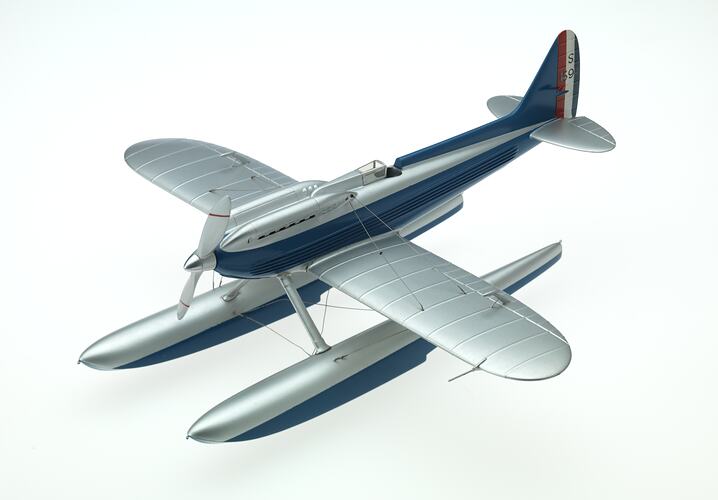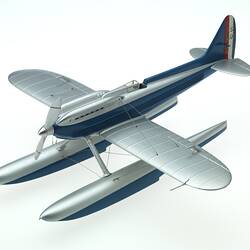The Schneider Trophy for seaplanes began in 1912. It became the premier international contest for aircraft speed and technical development particularly in the 1920s. The rules for the contest stated that the nation which won three consecutive contests would keep the trophy in perpetuity. However, spending cuts during the Depression led to the loss of British government funding for the 1931 contest despite having won the previous two events. It was solely due to the gift of 100,000 Pounds by Lady Houston that a British team could compete in the 1931 event. Lady Houston was a philanthropist and a keen supporter of British aviation but the gift was also intended to embarrass the Ramsay Labour government which she loathed. She later funded the successful first flight over Mount Everest by a British team in 1933, partly as a protest over calls for Indian independence.
The S.6B was designed by Reginald Mitchell of Supermarine Aviation Works Ltd as a developed version of his previous S.4, S.5 and S.6 seaplanes. The S.6B retained the Rolls-Royce R engine fitted to the 1929 S6 which was capable of delivering about 1,500 horsepower for short periods. Sir Henry Royce developed the R engine for the 1931 contest to give 2,783 horsepower, a 21% improvement. The 1931 Schneider Trophy contest was something of an anti-climax after the French and Italian teams withdrew their entries. Flight Lieutenant John Boothman, RAF, flew the Calshot course alone, achieving an average speed of 340.08 miles per hour over seven laps to keep the Schneider Trophy in Britain and set a world record speed of 379.05 miles per hour the same day. This machine later set an absolute world air speed record of 407.50 miles per hour. Mitchell went on to design the Spitfire fighter aircraft which first flew in 1936. The Rolls-Royce R was developed into the Griffon engine which was used on later model Spitfire aircraft as well as other aircraft types. The S.6B was later donated to the Science Museum in London where it remains on display.
More Information
-
Keywords
-
Localities
-
Authors
-
Article types

